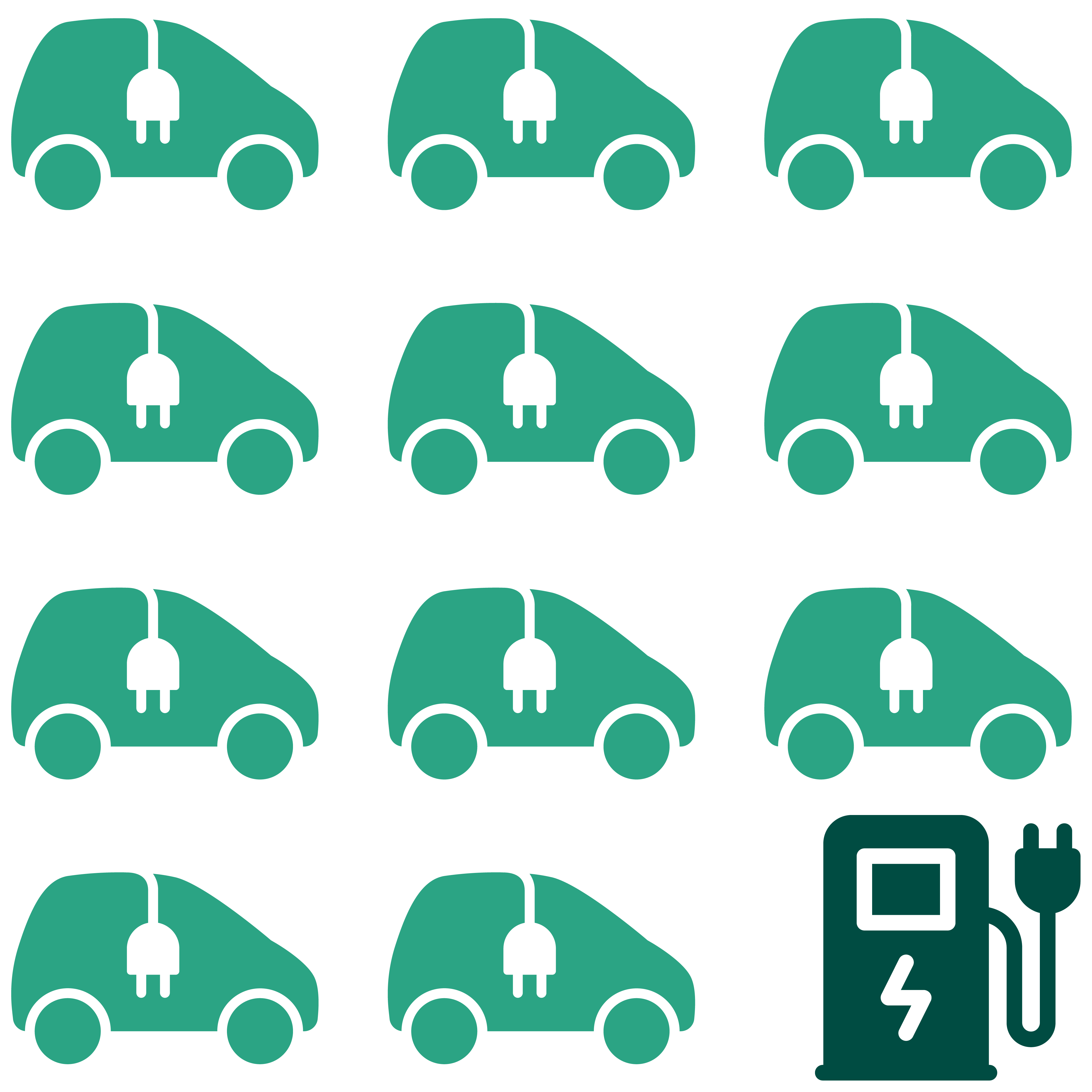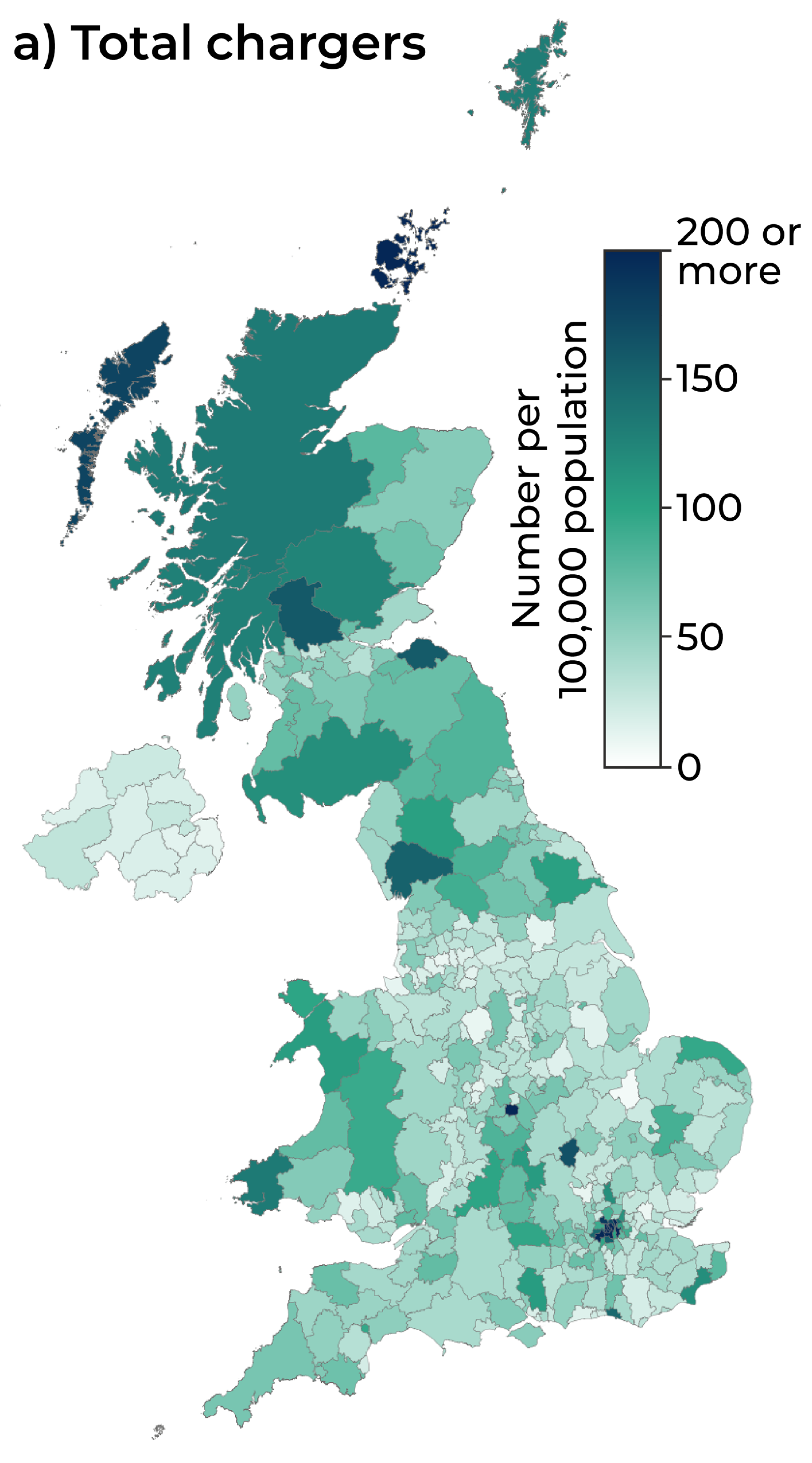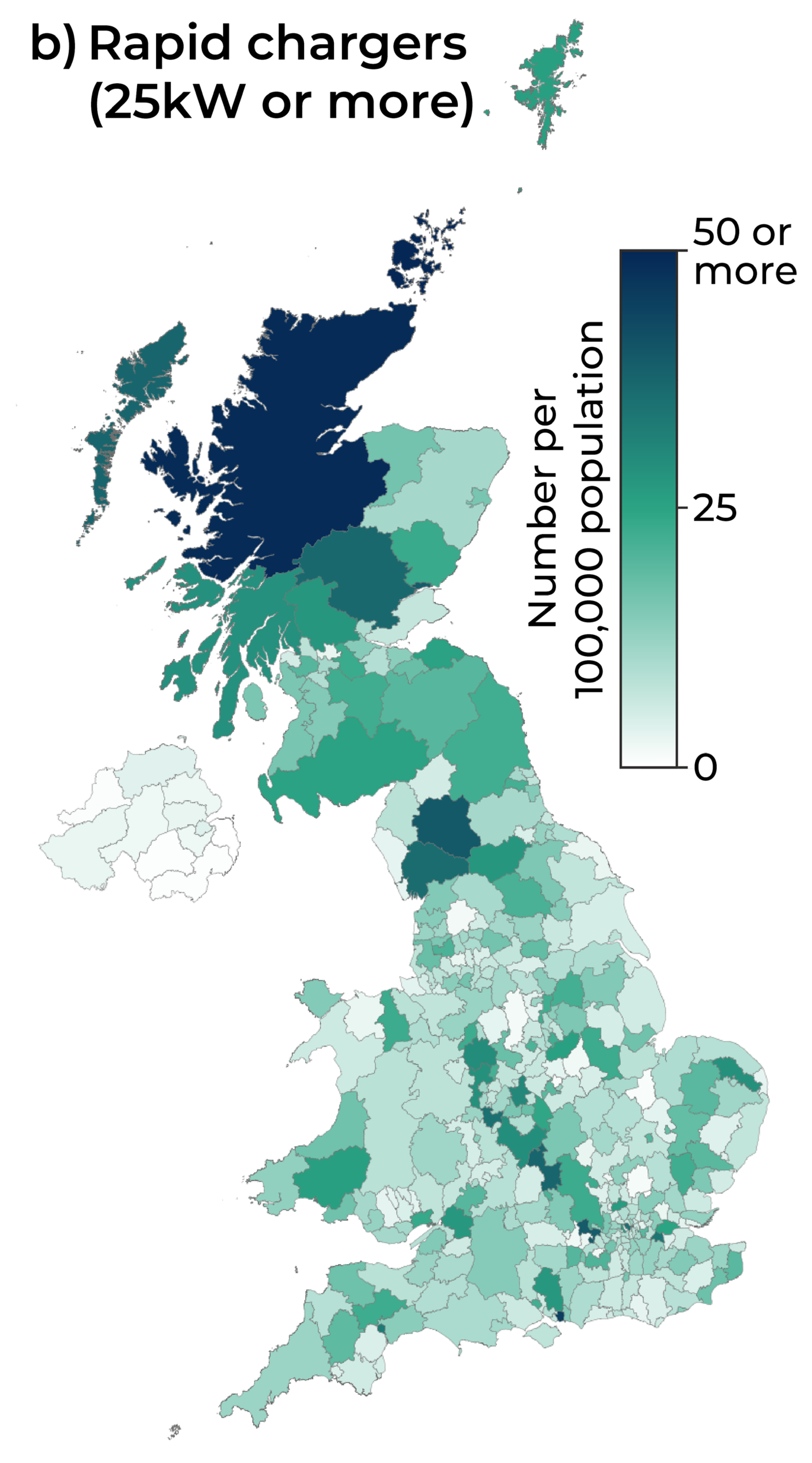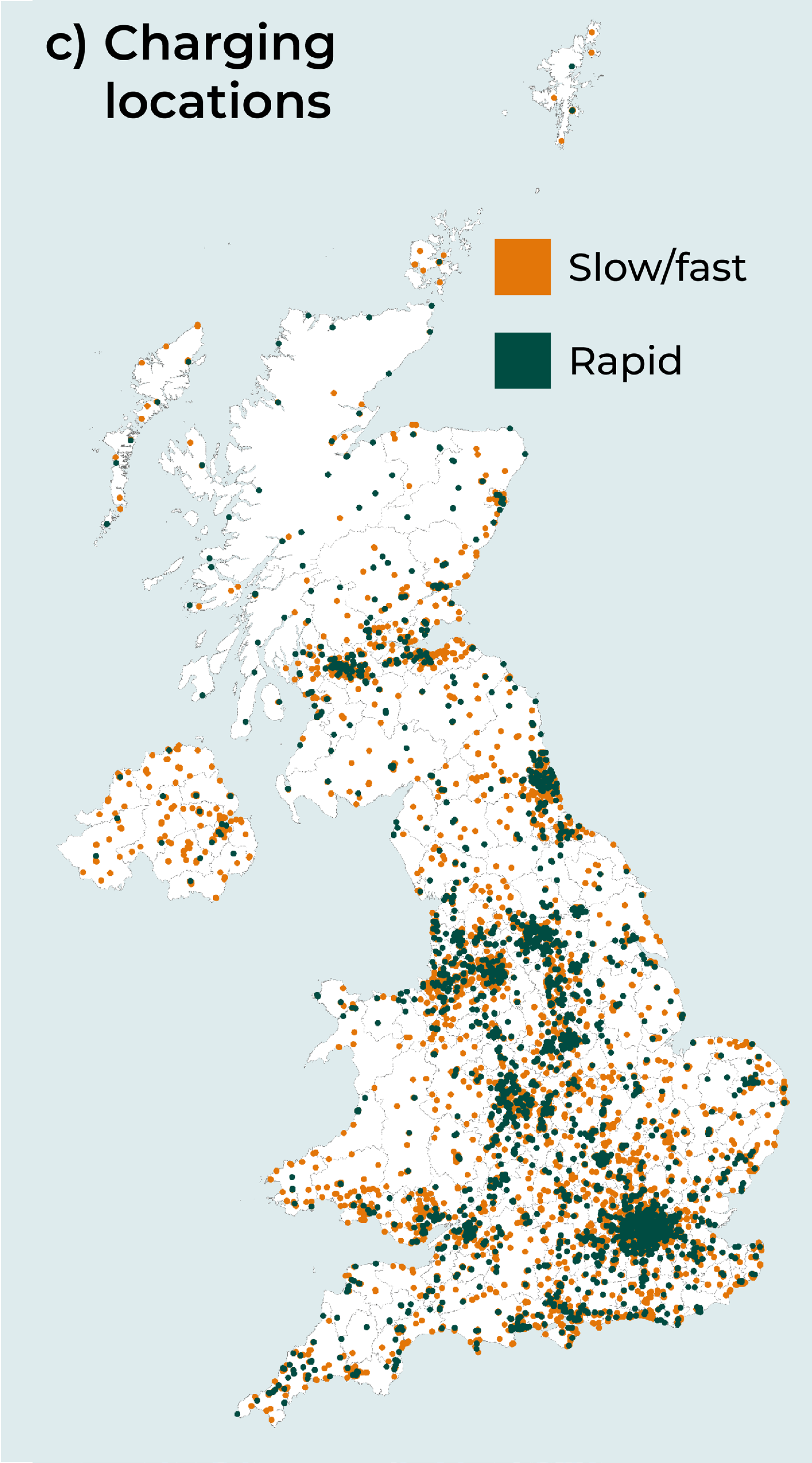The Welsh Government’s plan to deliver electrical vehicle (EV) charging infrastructure (EVCI) has not met 5 of its 9 targets, a Climate Change, Environment and Infrastructure (CCEI) Committee inquiry has found.
The Welsh Government previously described accelerating EV uptake as “one of the most important actions” in carrying out its Net Zero Plan. This transition is not just ‘nice to have’ – it will be critical if the UK Government goes ahead with a plan to ban the sale of petrol and diesel-only cars by 2030.
This huge change will be impractical without the right public charging infrastructure in place to support it.
Many of the powers and responsibilities in this transition sit with the UK Government, which has also been criticised by the RAC on progress against its own EV infrastructure targets.
The Welsh Government developed its EV Charging Strategy in 2021 and an accompanying Action Plan for its implementation. Our web app shows the Welsh Government’s progress on delivering its Action Plan.
“The provision of one public charge point for every 7 to 11 electric vehicles on the road by 2025.”

Action status: Achieved
The Welsh Government said in September 2022 that Wales had 1,417 public chargers, or about 9 battery-powered electric vehicles (BEVs) for every charger.
“Connections group to report in the current (2021-22) financial year.”

Action status: Not achieved
A connections group, which would allow TfW and the Welsh Government to work with electric grid companies to tackle grid capacity issues, is now expected to be established 'in early autumn 2023'.
“Network of charging forecourts across Wales at approximately every 20 miles across the strategic trunk road network by 2025.”

Action status: On course to be achieved
The Welsh Government says that its SRN Rapid project will install 36 rapid chargepoints over 19 locations by the end of 2023, or one every 20 miles for ‘most’ of its strategic road network and one every 25 miles for the rest. TfW has installed rapid chargers in 6 of its 19 planned locations so far, with 9 more charging expected to become live this year.
“Welsh Government will deliver a National Quality Standard to be used in public sector procurement by the end of 2021.”

Action status: Delivered late
The Welsh Government has developed National Standards for EV Charging Infrastructure in Wales which they say have been used since local authorities and delivery partners since January 2022. It says this guidance will be available online “within the next few weeks” as of May 2023.
“Review of policy and regulations by 2022 and updates made, where appropriate, to support electric vehicle uptake.”

Action status: Not achieved
The Welsh Government says will launch a consultation on amending building regulations in summer 2023.
“Establishment of a charge point operator working group (CPOWG) in 2021.”

Action status: Not achieved
Establishing a charge point operator working group (CPOWG) would allow private, public and not-for-profit organisations to communicate and share knowledge about EV charging infrastructure. The Welsh Government now says it will set up a CPOWG in the summer of 2023.
“Enhanced public confidence in electric vehicle charging, moving Wales from the innovator stage to … market maturity by 2030.”

Action status: Progress unclear
The Committee heard that there was little awareness or public confidence in EV charging infrastructure in Wales. The Welsh government said it is planning a communications programme to tackle this, and that it would try to make its progress in this area more measurable.
“Complete a supply chain and opportunities review by end of 2021.”
“Establish a programme… for innovation and investment.”

Action status: Progress unclear
The Welsh Government says that an EV charging procurement framework will be ready in summer 2023. An innovation and investment programme has not been announced, although the Welsh Government says it is bringing together its Transport Decarbonisation and Business & Regions teams to explore and deliver private sector investment and innovation opportunities.
“Charging infrastructure to be considered in all relevant new and emerging local and regional development plans, starting 2021,” to “Maximise synergies between different charging needs.”

Action status: Progress being made
The Welsh Government says it has developed a ‘co-location’ tool for identifying where EV charging infrastructure and renewable power sources could be combined, however it’s unclear whether this is being used.
The CCEI’s report, and Welsh Government’s response will be debated in Plenary this week.
Does Wales have enough EV chargers?
There were 1,417 public EV chargers in Wales in September 2022. A more recent distribution is shown on the maps below, along with EV charger distribution across the rest of the UK.
Maps showing a) All charging points per 100,000 people across UK local authorities, b) Rapid and ultra rapid charging points (25 kW or more) per 100,000 people across UK local authorities and c) Locations of charging points across the UK. Data for a) and b) from April 2023 and for c) from 31st May 2023.



Source: a) and b) Department for Transport; c) National Chargepoint Registry. NCR data are open sourced and maintained on a rolling basis. NCR does not have complete coverage of every charge point in the UK. For charge points with multiple connectors of different power ratings, the highest power connector was used in the analysis.
The Welsh Government says this translates to 9 BEVs (battery-powered EVs) for every public charger, meeting its target of “one public charge point for every 7 to 11 electric vehicles on the road by 2025”. However, it’s debateable whether this is the best way to assess if enough chargers are being installed to achieve the EV charging strategy’s goal that:
By 2025, all users of electric cars and vans in Wales are confident that they can access electric vehicle charging infrastructure when and where they need it.
This is because EV ownership is set to dramatically increase over the next decade.
EV uptake is currently low in Wales. Plug-in cars represent only 1.2% of those registered across Wales, less than half the UK-wide figure of 2.9%.. SP Energy Networks (SPEN) told the Committee that, in the North Wales region they serve, they expect the number of EVs to reach between 99,000 – 284,000 by 2030, dwarfing the approximately 21, 000 EVs registered in total across Wales as of 2022 (this includes about 12,000 BEVs).
To account for this change, the Welsh Government’s Action Plan aims for 1 public charger to every 25 EVs as adoption increases. Last year, 534 chargers were installed across Wales, but this pace would likely need to increase further to keep up with targets.
The Royal Haulage Association (RHA) also voiced concerns that the Action Plan didn’t consider the potential EV charging needs of commercial vehicles.
In its response to the CCEI report the Welsh Government acknowledged that, “significant further investment will be required to meet projected levels of EV uptake and demand” but rejected the report’s recommendation to revise its EV charging strategy accordingly.
Rapid charging is crucial for driver confidence in EVs
Paul Bevan, from the Electric Vehicle Association Cymru (EVA Cymru), told the Committee current EV charging targets don’t reflect other factors affecting charging provision suitability such as availability, accessibility, or reliability. He also highlighted the importance of readily available en-route rapid and ultra-rapid charging for boosting drivers’ confidence in using EVs for longer journeys.
There are now 207% more rapid chargers in Wales than when the EV charging strategy was published. This brought the number of rapid chargers per 100,000 people in Wales to 11.3, in line with the UK average. The Welsh Government and TfW have also started a programme of installing 36 rapid chargers across 19 locations along the strategic road network by 2023.
Paul Bevan warned the Committee this still wouldn’t be enough to meet EV charging demands. He criticised the government’s target of a rapid charger “approximately” every 20 miles across the strategic trunk road network as “bare bones”, and echoed others’ concerns that this lack of ambition and urgency was discouraging EV take-up.
As Dr Neil Lewis from Carmarthenshire Energy said, “there's a lack of EVs in Wales because of the lack of infrastructure.”
Unlocking electric grid capacity is critical, especially in rural areas
The Committee heard grid capacity is a major barrier to installing charging infrastructure. This is particularly true in rural areas. The WLGA reported some local authorities waiting months for grid connections to charging points. The Welsh Government and TfW say they have been working with the Wales’ two Distribution Network Operator companies, SPEN and National Grid, to ensure grid capacity can cope with future EV charging demands. However, a promised ‘connections group’ across these parties hasn’t been established yet.
To accommodate increasing electricity demands brought on by clean technologies, SPEN and National Grid said they wanted to invest £615m and £6.7bn respectively in their grid networks across the UK. However, the Committee heard there were other ways of tackling grid capacity issues, such as smart charging, and co-locating chargers with their own renewable energy sources and storage. The Welsh Government says it has developed a tool for identifying where such sites could be installed, but the impact of this in practice isn’t yet clear.
Progress in private sector collaboration has been mixed
The Welsh Government’s EV charging strategy emphasised that, “successful action will rely on public and private sector collaboration.”
However, the Welsh Government hasn’t yet established either of the collaborative groups involving the private sector which were promised in its Action Plan: the Connections Group and a Charge Point Operator Working Group (CPOWG). Another Action Plan proposal, a “programme to realise opportunities for innovation and investment,” also remains undelivered.
Have regulations caught up to EV charging needs?
The Action Plan committed to reviewing building regulations to support charging infrastructure rollout in homes and workplaces by 2022. However, the Welsh Government now says it will begin consultations in summer 2023. (EVA) Cymru pointed out this means Wales lags behind other UK nations:
In Scotland, a standard (7kW) charge point must be provided for each residential building with at least one parking space and a ratio of 1:10 for every non-residential building. England has in place similar requirements and these regulations also extend to substantial renovations.
However, the Welsh Government says it will publish a National Quality Standard soon. These guidelines were proposed in the Action plan to ensure “safe, accessible, and reliable public electric vehicle charging in Wales”, which meets Welsh-specific needs such as bilingual accessibility.
Looking to the future
Whilst charging provision has been improving in Wales, the Committee’s report lamented what it saw as the Welsh Government’s “broken promises and inadequate progress” in promoting EVs. Its report also reflected the concerns of stakeholders over a lack of transparency about progress.
The Welsh Government rejected a Committee recommendation to provide more regular updates on the KPIs, saying that it would provide these at "strategic points in time". The Welsh Government also believed the Committee’s verdict on its performance was unfair. Its response to the CCEI report asserted it had, “focused its limited resources” on delivering chargers and tools that would accelerate further roll-out.
Regardless, this much is apparent: EVs now represent 12% of new car registrations in Wales, and charging demand is set to soar over the next decade. Whether charging infrastructure will be available in the right place and right quantity for them, is another question.
Article by Olivia Watts and Joe Wilkes, Senedd Research, Welsh Parliament






